As the automotive industry in Europe undergoes a seismic shift from internal combustion engines (ICE) to electric vehicles (EV), major players like Volkswagen, Stellantis and Renault are navigating complex changes in their production strategies.
Vehicle companies have always changed production arrangements, with moves frequently coinciding with model or platform changes. These changes also normally involve major re-tooling and investment at the factories concerned. In Europe, as the industry transitions away from ICE vehicles to EVs this trend is intensifying. Moreover, as the largest companies – especially Stellantis and Volkswagen – have sought to maximise efficiencies and synergies across their multiplicity of brands, the industry is witnessing further change, with formerly single brand plants transitioning into multiple brand operations.
And although it has a less complex brand and model structure, some of these same trends are evident at Renault, as its alliance with Nissan and Mitsubishi evolves in new directions. This review looks at the changes at Volkswagen, Stellantis and Renault. An accompanying article (insert link as you wish) looks at developments in the battery and electric motor supply chains at these and other VMs European vehicle manufacturers.
Volkswagen Group – small cars in Spain, larger cars in Germany and nearby locations
With four volume brands – Volkswagen, Audi, SEAT (which is transforming itself into Cupra) and Skoda – along with the lower volume Porsche, Bentley and Lamborghini marques and a manufacturing footprint covering Germany, Poland, Hungary, the Czech Republic, Slovakia, Spain and Portugal, frequent changes in plant allocations are unsurprising. The switch across all the group’s brands to EVs is accelerating this change, the key examples of which are now reviewed in turn, starting with the smallest vehicles in the group.
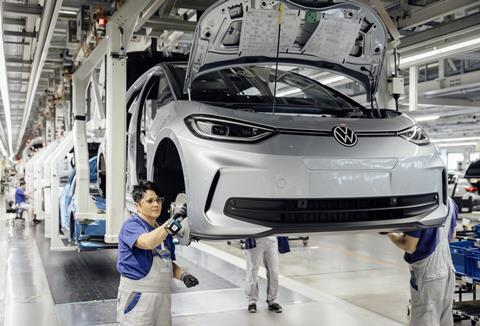
The future small EV programmes at the Volkswagen brand will be ID1 and ID2; there will be Cupra and Skoda versions of the ID1 and ID2, and potentially an Audi version of the ID2. Both sets of vehicles will be made in Spain, at SEAT’s Martorell and Volkswagen’s Pamplona factories. The ID1 and related models – which effectively replace the Volkswagen Up!, Skoda Citigo and SEAT Mii – will be made at Martorell; the ID2 series – which effectively replaces the Volkswagen Polo, Seat Ibiza and Skoda Fabia – will be made in Pamplona. Both series are expected to more crossover than conventional hatchbacks in design terms in line with market trends.
As this transition takes place, both factories will continue to make their current ICE ranges though to around 2030; the final ban on ICE sales across Europe will be 2035 but as countries raise their zero emissions vehicle sales targets, the ratio of ICE production will fall.
Market expectation now is that the forthcoming Euro7 regulations will contain very similar, if not the same, engine emissions targets as Euro6 meaning that ICE production of models such as Polo (currently made in Spain) and Skoda’s Fabia (currently made in the Czech Republic) will continue for longer than had been expected; but these ICE models – and their crossover siblings, e.g. Volkswagen’s T-Cross and Taigo – will not be replaced.
The space in the Volkswagen Bratislava factory currently occupied by the Up! and sister models will be used to make the new Skoda Superb (which is moving from Mlada Boleslav in the Czech Republic) and Volkswagen Passat (which is moving from Emden in Germany). In Skoda’s case this will free up space for both more ICE SUVs, such as the Kodiaq, and new EVs, the Enyaq and other Skoda EVs.
Meanwhile in Germany, Volkswagen’s Zwickau (Mosel) is already a 100% EV plant and Emden will soon be a purely electric plant; they will make the ID3/4/5/7, the latter the replacement for the Passat. Zwickau – which has seen lower than expected production this year of the ID3 especially – will also take on production of new Volkswagen models in the Trinity project. This was due to have its own brand-new factory, on a site near to Wolfsburg; this plan has been cancelled for a variety of cost reasons (including a lower overall demand expectations which render another factory unnecessary) and instead Trinity project models will be made in Zwickau.
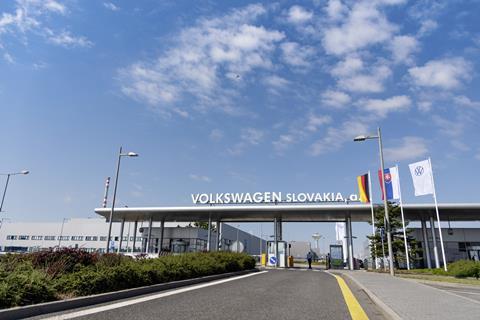
Wolfsburg will continue with ICE models – Golf and Tiguan especially – but will gradually take on more EV production, including ID3 and the electric Golf, one of the few model names which Volkswagen will retain during the transition to EVs. Other well-known model names, like Passat and even Polo, will likely disappear when their ICE versions come to an end.
Meanwhile the Hanover van plant is transitioning to a 100% EV line-up with the ID Buzz and passenger versions of the Transporter (the commercial vehicle Transporters will soon be made for Volkswagen by Ford in Turkey), while Volkswagen Poland will take on production of a smaller van for Ford, Transit Connect, which moves from Spain.
At Audi there is relatively little movement in terms of what is made where – Ingolstadt and Neckarsulm will remain the centre of Audi production, while the largest SUVs, Q7 and Q8, will be made in at Volkswagen Slovakia in Bratislava, although electric versions will also be made in Brussels; some electric models, under the e-tron banner, will also be made in Hungary. Skoda too will transition to EVs but will also continue ICE vehicle with the Fabia small car and the Kamiq/Karoq/Kodiaq ICE/PHEV SUV range coinciding until 2030.
Stellantis finally making manufacturing sense of its multiplicity of brands
Not so long ago, PSA was simply Peugeot and Citroen; then it bought Opel and Vauxhall and more recently merged with Fiat-Chrysler (FCA) to create Stellantis. In Europe this gave the company a complex set of brands and manufacturing operations which needed significant reorganisation for efficiency and synergies reasons. At the heart of this is the need to make the most efficient use of its extensive manufacturing network, by maximising scale efficiencies as far as possible. A key policy here is for each factory to focus on a particular platform while making vehicles for several brands.
With Peugeot, Citroen, DS, Opel/Vauxhall, Fiat, Alfa Romeo and Lancia, plus contract van manufacturing for Toyota, achieving manufacturing and platform economies of scale is a complex business. The situation is made more complex with some European production of Jeeps, plus the lower volume Maserati brand. In recent years there has been a great deal of movement of production of much of its line-up around Europe, sometimes at a model change, sometimes in mid-cycle.

The first key outcome of the Stellantis policy is that the number of single platform, multi-brand factories is rising; the corollary of this, secondly, is that the number of single brand or single model factories is declining.
The Opel Eisenach plant which makes the Grandland is the last single model factory; the Rennes plant still makes the Citroën C5 Aircross and some Peugeot 5008s, but increasingly models for three or more brands are produced on a common platform increasing a factory’s efficiency and, in theory at least, giving suppliers higher volume deliveries.
Stellantis’ single platform, multi-brand policy has been used for several years in vans: Hordain in France and Luton in the UK make mid-sized vans for Citroën, Peugeot, Opel/Vauxhall and Fiat. The French plant also makes vans for Toyota. Similarly, the Vigo plant in Spain, its associated over-spill plant at Mangualde factory in Portugal and now the Ellesmere Port plant in the UK, do the same in the small van segment; in this case, the Spanish plant also makes models for Toyota. Doing this in vans is one thing; there is not much difference in trim and specifications between vans across the different brands.
Moreover, when the latest small vans (Berlingo, Partner and Combo) were launched, they came to market at the same time. Other than badges there was really very little difference between the brands, so manufacturing effectively the same model for different brands was something that Vigo especially could take in its stride. However, to do this successfully in cars is more difficult.
In cars, the many Stellantis brands have differing styling features, or image cues, be it the lights, bonnet shapes, grilles and unique colours inside and out; dashboards look very different, steering wheel controls will vary, and seat fabrics and other trim also vary. Wheel arches and corner modules, as well as roof lines, all mean different metal or plastic parts, dedicated tooling and moulds and adjustments to the assembly process depending on the vehicle being made. This makes lineside delivery of components more complex than when a single model moves down the line with limited differences in terms of body or structural components.
The best current examples of the multi brand approach in a single factory are at Tychy in Poland and soon at Melfi in Italy. At Tychy, the plant is moving from a two model set-up, producing the Fiat 500 and Lancia Ypsilon to a three model line-up using the CMP platform originally developed by Stellantis’ Chinese partner, Dongfeng: an Alfa Romeo (probably to be called Kid) will appear in 2024 (this being a long awaited replacement for the MiTo); the Fiat 600 starts production in late 2023 (replacing the soon-to-end Italian-made 500X, although both models will be available alongside each for a few months); and the Jeep Avenger appeared at the end of 2022 (this will ultimately replace the Italian-made Renegade). Together these three models will soon give Tychy a very different line-up.
These models have been launched with several months’ gap between them to allow the plant to cope with the specific requirements of each model and their unique supply chains for key visually differentiating parts. Moreover, by phasing the vehicles’ launch times the factory can avoid grouping peak production volumes, and similarly avoid common low points in their production cycles as well.
For reference, the current Lancia Ypsilon will be replaced by a new electric model, made at Zaragosa in Spain, alongside the Opel Corsa and Peugeot 208. To create space here, the ICE 208s will be made in Morocco, while the C3 Aircross and Opel Crossland X move to Slovakia where the 208 used to be made.
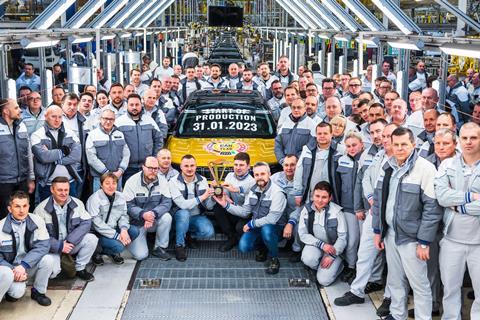
Having worked out how to arrange a factory to make similar cars from one platform for three brands at Tychy, Stellantis is going further along this path at Melfi. The ICE-powered Jeep Compass (and the Jeep Renegade and Fiat 500X) currently made in Melfi, will also end soon; the Compass’ electric replacement will also be made in Melfi, this time alongside new models for Opel, Lancia and two vehicles for DS, which had started out as a premium Citroen marque.
The new five model line-up at Melfi will use the STLA Medium platform, starting in 2024; the first will be a fastback model for DS, to be called DS8 or DS9. This will be followed by the electric Jeep Compass in early 2025 (the ICE model will continue until then), and in late 2025 there will be a second DS model replacing the DS7 SUV which is currently made in France.
Then in 2026, there will be a Lancia model similar to the new DS7, and finally, using the first DS model’s fastback profile, there will be an Opel model, possibly called Manta. This is designed to be a more upmarket, aspirational model than the Insignia which Opel stopped making a few years ago. Over the next two years therefore Melfi will switch from making three ICE models (500X, Renegade and Compass) for two brands on two platforms, to making five models for four brands on a single platform.
Meanwhile in Spain, the Zaragosa plant, for long purely an Opel factory, will make Lancias as well as Peugeots, meaning vehicles for at least three brands will come out of that factory; Lancias will also be made in France, alongside Peugeots, while Opels have been made alongside DS models in France for more than three years. The DS3, currently made in France, will move to Pomigliano d’Arco in Italy to replace the Panda - which moves to Serbia to complete the geographic merry go-round; the new Panda to be made in Serbia will be an electric model.
Two brands in a plant is commonplace, but two is not enough to maximise production efficiencies. The new approach for manufacturing at Stellantis will see each plant producing vehicles on one platform, for three or four or more brands. Driving up scale economies, reducing the dependence of individual factories on a single model, providing better business for suppliers delivering common platform parts and allowing brands to enter new niches on the back of investment from other larger brands: these are all direct consequences of this plan. It has taken several years for Stellantis to begin to make sense of its multiple brands; finally, it is doing this, and at pace.
Renault – following the Volkswagen and Stellantis approaches, but with a simpler footprint
Renault has a less complex manufacturing footprint than Volkswagen or Stellantis but is approaching the new EV world with a similar set of policies. First, it is, for now, concentrating its EV transition in France. It is developing a centre of expertise in EV production, electric motors, and batteries around three plants in the north-east of the country – Douai, Maubeuge and Ruitz – along with the Cleon site in the west near Rouen. Together the three north-east sites are referred to by Renault as ElectriCity; and will account for the production of at least 400,000 vehicles per year, 250,000 at Douai, and 150,000 at Maubeuge, with components from Ruitz, a former transmissions plant.

The first EVs coming out of Douai are the Scenic and Megane E-Tech models, and they will be joined soon by the long awaited small electric Renault 4 and 5 models; a new electric Nissan Micra will also be produced.
The Maubeuge plant will make electric Kangoo vans (and the Nissan and Mercedes equivalents, NV200 and Citan); it may make take on some of the small EVs from Douai subject to demand.
These vehicles will use batteries made at a new AESC Envision facility close to Douai which will have the capacity to make cells and complete batteries for 400,000 vehicles a year.
The next Renault plant to go fully electric is expected to be the current Twingo plant in Slovenia, which had not been given any new models with some observers expecting the plant to close when the current Twingo’s life cycle comes to an end. However, Renault will now replace the Twingo with a small new EV which will be made in Slovenia from around 2026.
Elsewhere, in Spain and Turkey, Renault will continue with ICE and hybrid vehicle production, although an electric version of the Captur will be made at Valladolid in Spain from 2025 or 2026. This programme will include an electric version of the ASX for Mitsubishi as well (the current ASX which Renault Spain makes for Mitsubishi is a rebadged version of the ICE-powered Captur). Ultimately the Austral, Rafale and Escape crossovers also made in Spain, at Palencia, will convert to electric power, but the timing for this has not yet been confirmed.
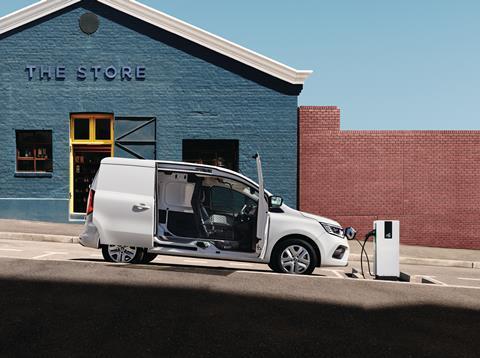
In Turkey, production of the ICE-powered Clio (and soon a version for Mitsubishi, reviving the Colt name in Europe), will resume, and Renault Turkey will also take on some production of the Dacia Duster from Romania to meet increased demand for the near East and African markets, while allowing Romania to increase production of the new Bigster SUV, effectively a seven-seater Dacia Duster.
The switch to EVs will eventually take place at Renault in Spain and Turkey, and at Dacia, but this is unlikely before the late 2020s.
One other interesting EV development at Renault is at its van plant in north-west France, where the Trafic van is produced. It will soon start making the electric FlexEVan in a new joint venture in which Renault and Volvo Trucks will each hold a 50% stake, investing €330m each over the next three years; in addition, logistics company CMA CGM has signed a non-binding letter of intent to invest a further €120m in the new project. The FlexEVan will likely replace the Trafic over time, and a version will be offered by Nissan, which already takes the Trafic for sale as the Primastar.





























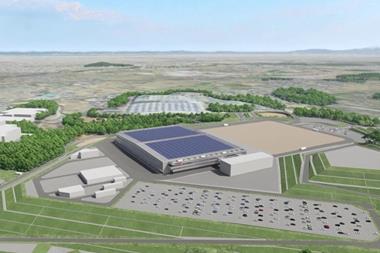

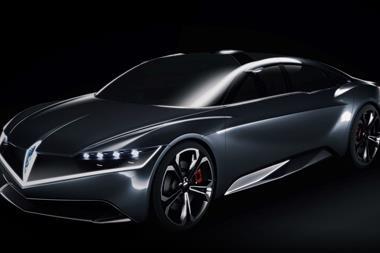
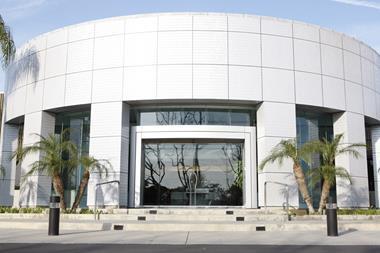
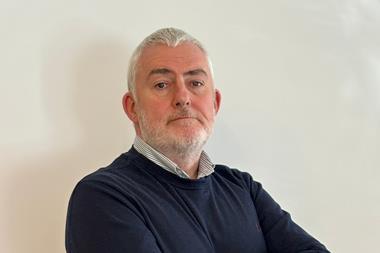
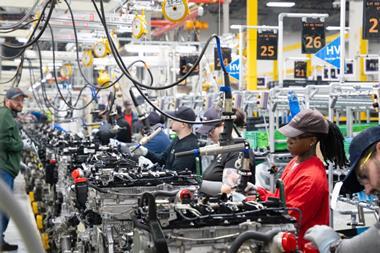



No comments yet